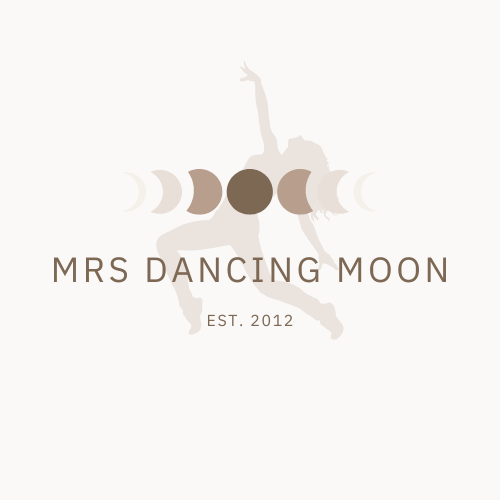Have you ever just smacked at the back end of a ketchup bottle while it’s completely upside down only to become more frustrated? Then you later come to the conclusion that perhaps tilting it 45 degrees will give you better success at getting any out, and voila, it worked!
When teaching my prenatal dance classes, we discuss this very same thing. That a combination of rocking, swaying, circling, bouncing, and various other position changes help maneuver baby down and out of the birth canal.
The art of dance in particular has been a lifelong passion of mine since I was a young girl. When first becoming pregnant in 2007, I continued with what I loved and was encouraged to do so by my midwife. During the birth of both of my children I enjoyed being able to listen to my body and babies and move around freely as we welcomed them both to this Earth.
However I later noticed that dancing, and movement overall during pregnancy, labor and delivery, was frowned upon in American culture. Pregnancy and birth becomes the time to sit down, put your feet up, and birth on your back so that the doctor can have a clear view.
With a culture so suggestive of sitting and reclining as a way of luxury and convenience, we overlook the advantages of moving our bodies and being upright in a variety of positions (squatting, kneeling, standing, hands and knees). Women all over the world since the beginning of time have perfected birth by allowing themselves the freedom to listen to their babies and adjust their bodies as they give birth.
One of my prenatal dance students recently gave birth and wrote this statement shortly after-
“I danced throughout my pregnancy in class and at home with my 2 year old and finally during labor with my husband ~ and it enabled me to have this beautiful laboring experience that just felt good in my body. Our bodies are built for movement AND stillness and Nicole's dance classes really celebrate movement in a way that empowers moms to listen to their instincts and know their inner strength.”
Movement, whether through position changes, actual dancing, or walking, can help create an opportunity for baby to not only move into an ideal birthing position, but to remain in position during much of pregnancy as well as help baby rotate appropriately when traveling out of the birth canal.
As told to us by Jean Sutton in “Let Birth Be Born Again”, shifting the pelvis from side to side as well as tilting it forward, gives more available space to use for baby's grand entrance into this world. She uses the imagery below to demonstrate how this is achieved.
Images from: http://optimal-foetal-positioning.co.nz/?page_id=25
An ideal positioned baby must rotate 90 degrees after birthing their head, so as to fit their shoulders through the birth canal. When we can offer them more available space to do this is, our babies have an easier opportunity to successfully be born vaginally, as nature intended.
If we dance during labor- using basic movements such as swaying, rocking, hip circles, shifting hips, changing positions, etc. - we can achieve more relaxation, less physical tension and are more likely to avoid the desire for drugs and interventions.
Mentor and teacher of mine, Stephanie Larson, founder of Dancing for Birth™ also points out that by using gravity and positioning (movement) we can also reduce the risk for interventions and shorten labor lengths.
“The first step to a satisfying birth,” says Larson, “is to listen to your baby via your body—and move accordingly. For many women this means laboring and birthing actively, in a forward-leaning vertical position, out of bed.” By moving instinctively, using gravity and positioning to their advantage, women can temporarily enlarge the dimensions of their pelvis for the baby’s passage, help their babies rotate and descend, help reduce unnecessary interventions and enjoy natural pain relief. Studies confirm that this shortens labor, reduces epidural requests, and reduces c-sections.
Dance has so many other benefits on so many levels as well. It benefits the body, mind and spirit.
As a producer of oxytocin, the love hormone needed to start labor, dancing can assist with the flow of oxytocin allowing labor to start naturally without the use of pitocin, the synthetic form of it commonly used in hospitals, when both baby and mama are ready.
Dance as a cardio workout helps build stamina, endurance, strength, and cardiovascular and respiratory health, as well as keeps our minds sharp and fluid as we learn and practice choreographed sequences.
The warm up, cool down, and improvisational practices we do also assist with flexibility, relaxation, and trust in one's body, enabling for a more confident mama in labor and as a new parent.
Overall, we leave dance class with our hearts and spirits feeling full, ecstatic and joyful knowing that although we may not be in charge of our birth process (baby is), we can have an impact and help our children have a more easeful transition into this world.
I interpret this quote by birth pioneer, Penny Simkin, to ultimately say the same thing that I've been describing here- “If you can’t move the baby, move the mother.”
Many women fear the so called “pain” of birth. But as Ina May Gaskin tells us, “If there is pain, it is not something to focus on. It is part of nature and therefore not to be feared.” By using movement, we can navigate and even avoid a painful experience by using it as a distraction and as a guidance tool to listen to our baby's needs as they journey to greet you.
Find your groove, know that the “pain” of birth is temporary, not to be the emphasis of the birthing experience, and help your baby navigate their own GPS.
(Pre/Post natal dance class offered Tuesdays at 3:45pm at happy baby in El Segundo. More info HERE)






